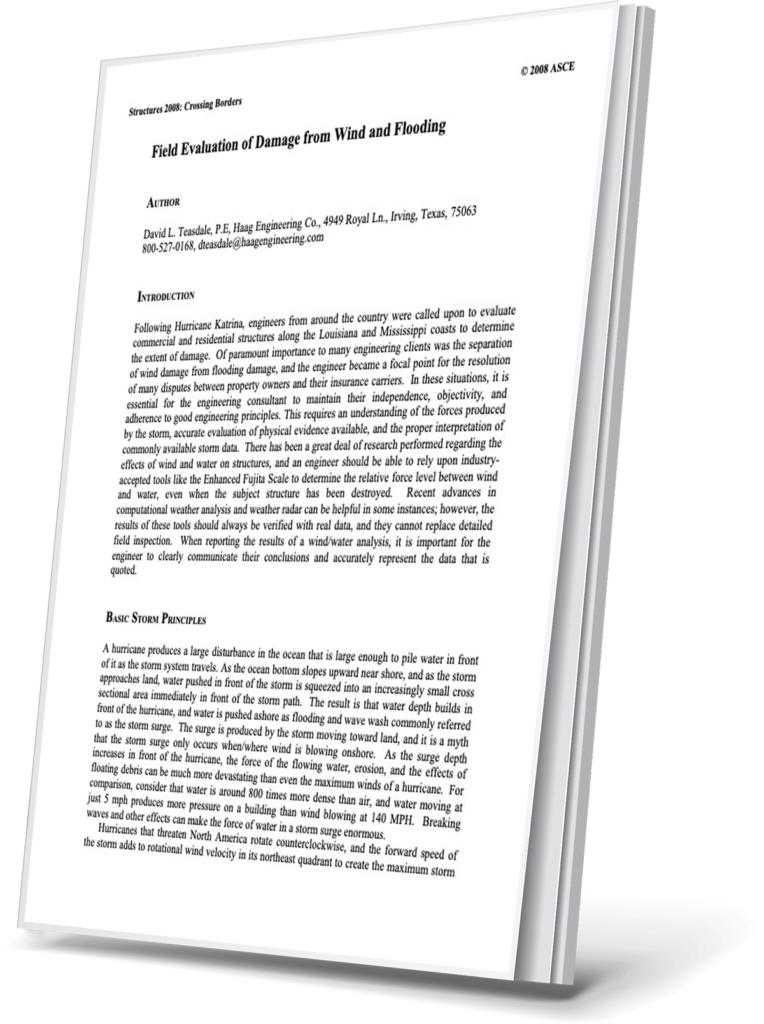Field Evaluation of Damage from Wind and Flooding
How to Distinguish Wind Damage from Flooding Damage Following a Storm
The separation of wind damage from flooding damage is of paramount importance to engineers following a storm. The engineer often becomes a focal point for the resolution of many disputes between property owners and their insurance carriers.
In these situations, it is essential for the engineering consultant to maintain their independence, objectivity, and adherence to good engineering principles. This requires:
- Understanding of the forces produced by the storm
- Accurate evaluation of physical evidence available
- Proper interpretation of commonly available storm data
There has been a great deal of research performed regarding the effects of wind and water on structures, and an engineer should be able to rely upon industry accepted tools like the Enhanced Fujita Scale to determine the relative force level between wind and water, even when the subject structure has been destroyed.
When reporting the results of a wind/water analysis, it is important for the engineer to clearly communicate their conclusions and accurately represent the data that is quoted. Armed with the right tools, an engineer can make a site inspection that accurately establishes the condition of the structure and the distribution of damage to upper and lower parts of the building.
Download this technical paper to learn more about:
- Basic Storm Principles
- Storm Data & Regional Surveys
- Interpretation & Use of Wind Data
- Inspection & Consideration of Damage

